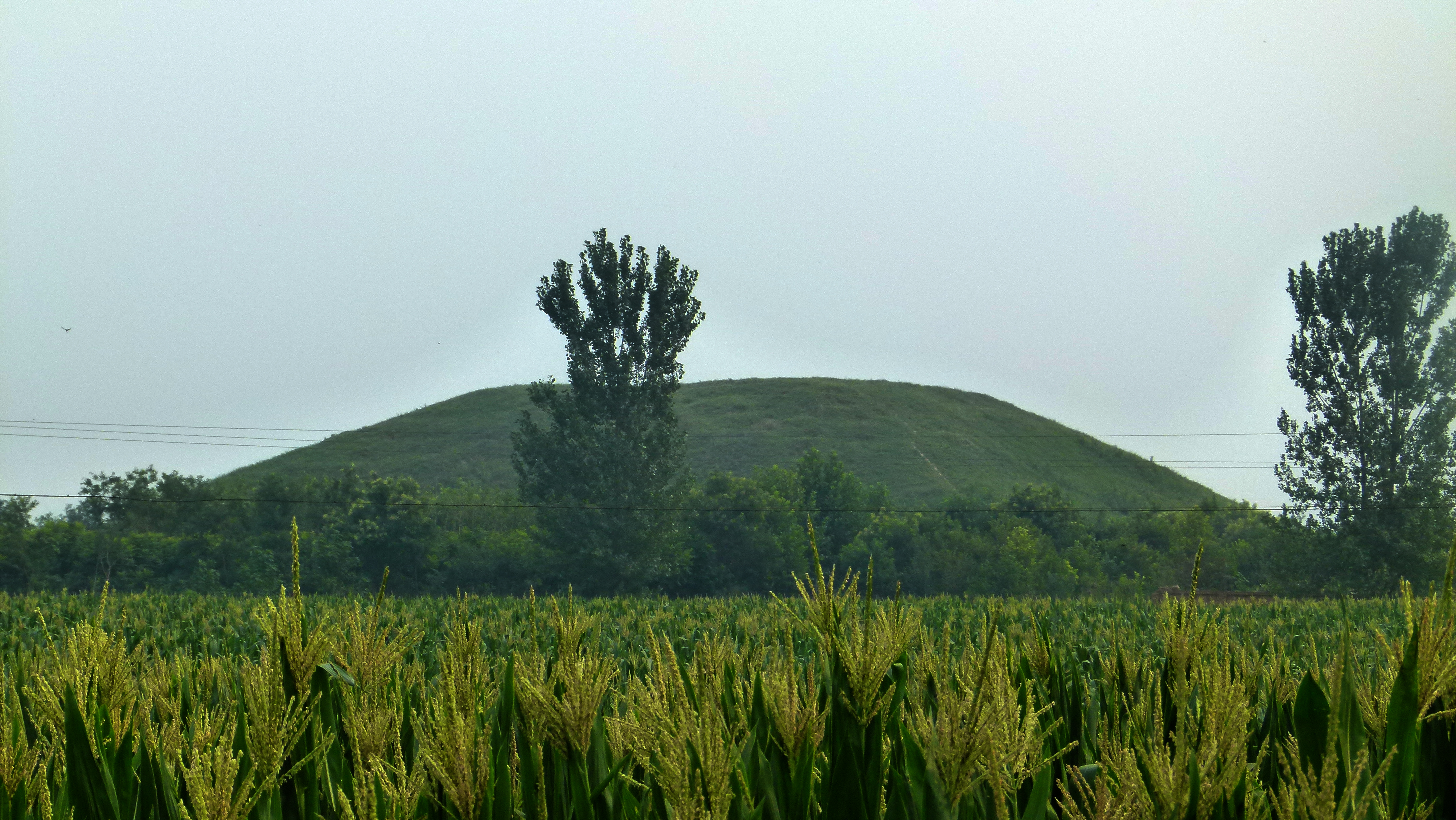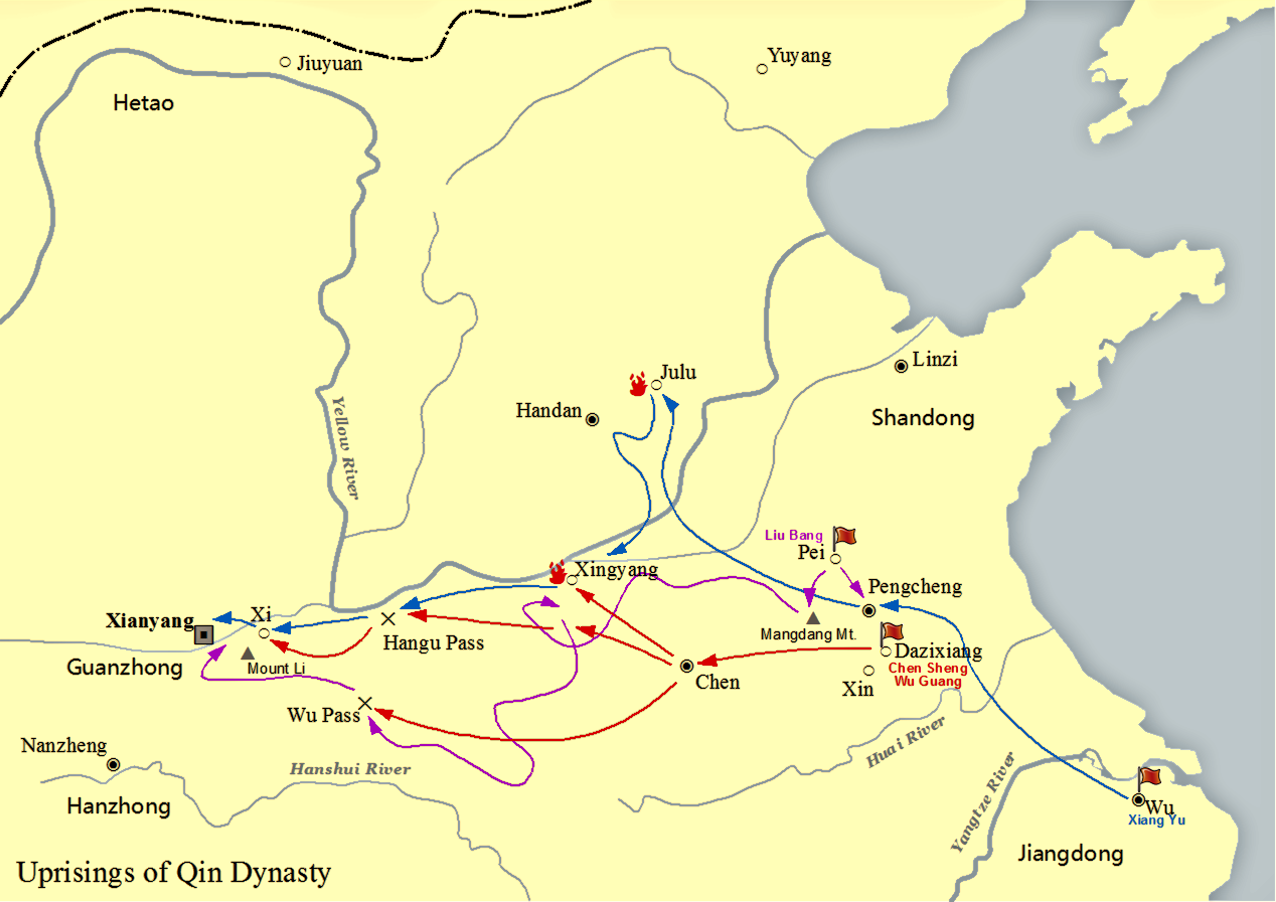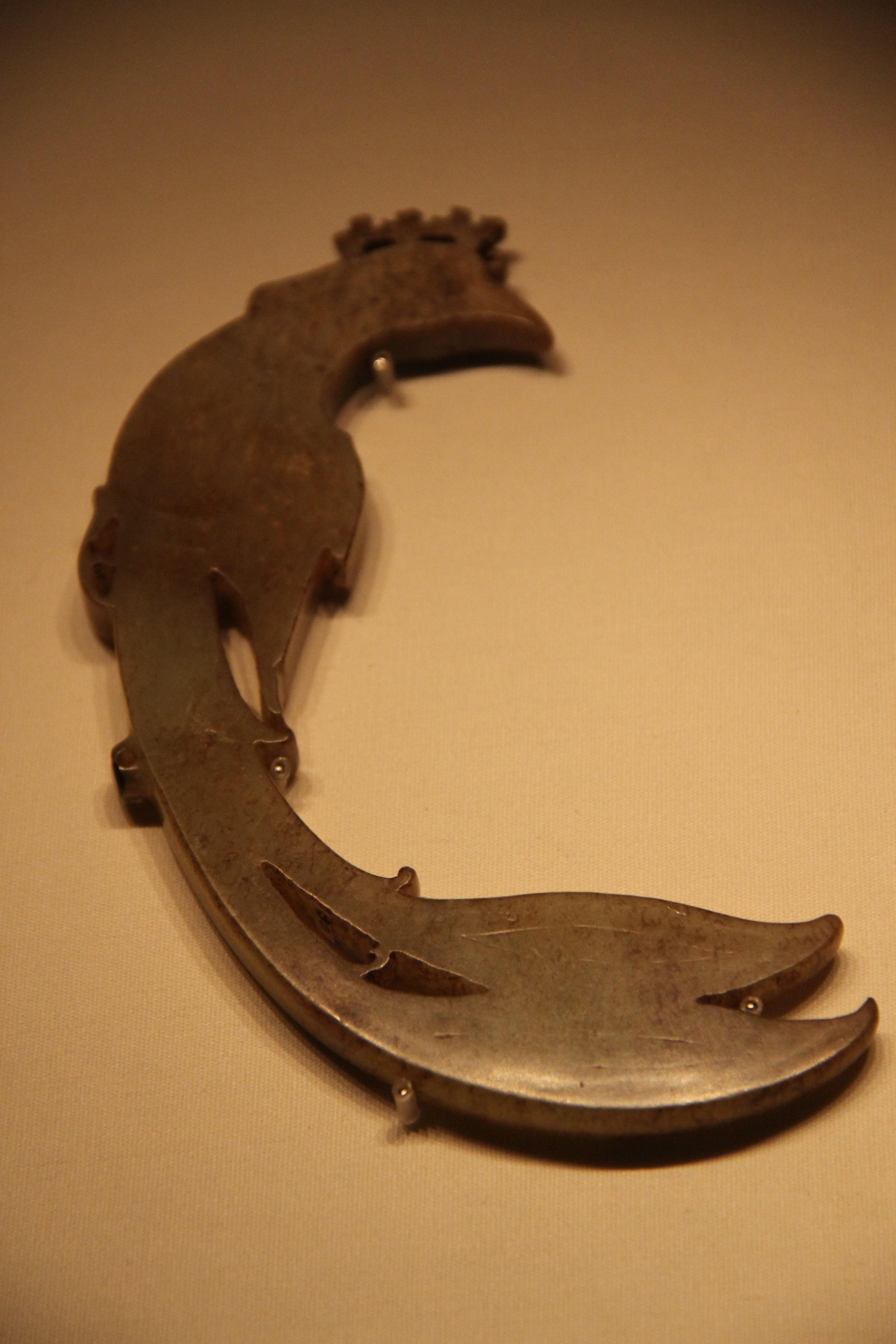|
Imperial Seal Of China
The Heirloom Seal of the Realm (), also known in English as the Imperial Seal of China, was a Chinese jade Seal (Chinese), seal carved out of Heshibi, a sacred piece of Chinese jade, jade.The Complete Collection of Treasures of the Palace Museum, Beijing 30: Imperial Seals and Signets - Gugong Bowuyuan Cang Wenwu Zhenpin Quanji 30: Xi yin (Taiwanese Chinese) – 2008. by Beijing Palace Museum. , Creation In 221 BC, the Seal was created when Qin Shi Huang destroyed the remaining Warring States and united China under the Qin Dynasty. Heshibi was a famous piece of jade stone which previously belonged to the Zhao (state), Zhao state. Passing into the hands of the new Emperor of China, he ordered it made into his Imperial seal. The words, "Having received the Mandate of Heaven, Mandate from Heaven, may (the emperor) lead a long and prosperous life." (wikt:受命, 受命wikt:於, 於wikt:天, 天, wikt:既, 既wikt:壽, 壽wikt:永昌, 永昌) were written by Prime Minister of the Im ... [...More Info...] [...Related Items...] OR: [Wikipedia] [Google] [Baidu] |
Imperial China
The earliest known written records of the history of China date from as early as 1250 BC, from the Shang dynasty (c. 1600–1046 BC), during the reign of king Wu Ding. Ancient historical texts such as the '' Book of Documents'' (early chapters, 11th century BC), the '' Bamboo Annals'' (c. 296 BC) and the ''Records of the Grand Historian'' (c. 91 BC) describe a Xia dynasty before the Shang, but no writing is known from the period, and Shang writings do not indicate the existence of the Xia. The Shang ruled in the Yellow River valley, which is commonly held to be the cradle of Chinese civilization. However, Neolithic civilizations originated at various cultural centers along both the Yellow River and Yangtze River. These Yellow River and Yangtze civilizations arose millennia before the Shang. With thousands of years of continuous history, China is among the world's oldest civilizations and is regarded as one of the cradles of civilization. The Zhou dynasty (1046–256 BC) supp ... [...More Info...] [...Related Items...] OR: [Wikipedia] [Google] [Baidu] |
Jade Burial Suit
A jade burial suit () is a ceremonial suit made of pieces of jade in which royal members in Han dynasty China were buried. Structure Of the jade suits that have been found, the pieces of jade are mostly square or rectangular in shape, though triangular, trapezoid and rhomboid plaques have also been found. Plaques are often joined by means of wire, threaded through small holes drilled near the corners of each piece. The composition of the wire varies, and several suits have been found joined with either gold or silver. Other suits, such as that of King Zhao Mo, were joined using silk thread, or silk ribbon that overlapped the edges of the plaques. In some instances, additional pieces of jade have been found beneath the head covering, including shaped plaques to cover the eyes, and plugs to fit the ears and nose. According to the ''Book of Later Han'', the type of wire used was dependent on the status of the person buried. The jade burial suits of emperors used gold thread; pr ... [...More Info...] [...Related Items...] OR: [Wikipedia] [Google] [Baidu] |
Three Kingdoms
The Three Kingdoms () from 220 to 280 AD was the tripartite division of China among the dynastic states of Cao Wei, Shu Han, and Eastern Wu. The Three Kingdoms period was preceded by the Han dynasty#Eastern Han, Eastern Han dynasty and was followed by the Jin dynasty (266–420), Western Jin dynasty. The short-lived state of Yan (Three Kingdoms), Yan on the Liaodong Peninsula, which lasted from 237 to 238, is sometimes considered as a "4th kingdom". Academically, the period of the Three Kingdoms refers to the period between the establishment of Cao Wei in 220 and the Conquest of Wu by Jin, conquest of the Eastern Wu by the Western Jin in 280. The earlier, "unofficial" part of the period, from 184 to 220, was marked by chaotic infighting between warlords in various parts of China during the end of the Han dynasty, downfall of the Eastern Han dynasty. The middle part of the period, from 220 to 263, was marked by a more militarily stable arrangement between three rival states ... [...More Info...] [...Related Items...] OR: [Wikipedia] [Google] [Baidu] |
Gold
Gold is a chemical element with the symbol Au (from la, aurum) and atomic number 79. This makes it one of the higher atomic number elements that occur naturally. It is a bright, slightly orange-yellow, dense, soft, malleable, and ductile metal in a pure form. Chemically, gold is a transition metal and a group 11 element. It is one of the least reactive chemical elements and is solid under standard conditions. Gold often occurs in free elemental ( native state), as nuggets or grains, in rocks, veins, and alluvial deposits. It occurs in a solid solution series with the native element silver (as electrum), naturally alloyed with other metals like copper and palladium, and mineral inclusions such as within pyrite. Less commonly, it occurs in minerals as gold compounds, often with tellurium (gold tellurides). Gold is resistant to most acids, though it does dissolve in aqua regia (a mixture of nitric acid and hydrochloric acid), forming a soluble tetrachloroaurate anion. Gold is ... [...More Info...] [...Related Items...] OR: [Wikipedia] [Google] [Baidu] |
Wang Zhengjun
Wang Zhengjun (; 71 BC – 13 AD), officially Empress Xiaoyuan (孝元皇后), later and more commonly known as Grand Empress Dowager Wang, born in Yuancheng (modern Handan, Hebei), was an empress during the Western Han dynasty of China, who played important roles during the reigns of five successive Han emperors (her husband, son, two stepgrandsons, and stepgreat-grandnephew) and later (according to traditional historians, unwittingly) led to the usurpation of the throne by her nephew Wang Mang. She is largely viewed sympathetically by historians as an unassuming and benevolent if overly doting woman who suffered much in her long life, who tried to influence the empire as well as she could, and tried to use her power for the benefit of the empire, and who was not a party to her nephew's machinations, but whose failure, leading to the downfall of the Western Han Dynasty, was her overdependence on her clan (the Wangs). Early life Wang was born the second daughter of Wang Jin, the ... [...More Info...] [...Related Items...] OR: [Wikipedia] [Google] [Baidu] |
Wang Mang
Wang Mang () (c. 45 – 6 October 23 CE), courtesy name Jujun (), was the founder and the only Emperor of China, emperor of the short-lived Chinese Xin dynasty. He was originally an official and consort kin of the Han dynasty and later seized the throne in 9 CE. The Han dynasty was restored after his overthrow, and his rule marked the separation between the Western Han dynasty (before Xin) and Eastern Han dynasty (after Xin). Traditional Chinese historiography viewed Wang as a tyrant and usurper, while more recently, some historians have portrayed him as a visionary and selfless social reformer. During his reign, he abolished slavery and initiated a land redistribution program. Though a learned Confucian scholar who sought to implement the harmonious society he saw in the Chinese classic texts, classics, his efforts ended in chaos. Wang Mang's late reign saw large-scale peasant rebellions, most notably the revolt of the Red Eyebrows. In October 23 CE, the capital Chang'a ... [...More Info...] [...Related Items...] OR: [Wikipedia] [Google] [Baidu] |
Western Han Dynasty
The Han dynasty (, ; ) was an Dynasties in Chinese history, imperial dynasty of China (202 BC – 9 AD, 25–220 AD), established by Emperor Gaozu of Han, Liu Bang (Emperor Gao) and ruled by the House of Liu. The dynasty was preceded by the short-lived Qin dynasty (221–207 BC) and a warring interregnum known as the ChuHan contention (206–202 BC), and it was succeeded by the Three Kingdoms period (220–280 AD). The dynasty was briefly interrupted by the Xin dynasty (9–23 AD) established by usurping regent Wang Mang, and is thus separated into two periods—the #Western Han, Western Han (202 BC – 9 AD) and the #Eastern Han, Eastern Han (25–220 AD). Spanning over four centuries, the Han dynasty is considered a golden age (metaphor), golden age in Chinese history, and it has influenced the identity of the History of China, Chinese civilization ever since. Modern China's majority ethnic group refers to themselves as the "Han Chinese, Han people", the Sinitic langu ... [...More Info...] [...Related Items...] OR: [Wikipedia] [Google] [Baidu] |
Ziying Of Qin
Ziying, King of Qin (, died January 206 BC) was the third and last ruler of the Qin dynasty. He ruled over a fragmented Qin Empire for 46 days, from mid-October to early December 207 BC. He is referred to in some sources with the posthumous name Emperor Shang of Qin (秦殤帝) although Qin abolished the practice of posthumous names. (In Chinese tradition, even someone who never held a ruling title while he was alive might be given the posthumous title "emperor" after his death.) Identity There is no firm consensus as to what Ziying's relationship to the Qin royal family really was. He is mentioned in historical records as either: #A son of Qin Er Shi's elder brother (who, according to Yan Shigu's commentaries, was Fusu); #An elder brother of Qin Er Shi; #A younger brother of Qin Shi Huang; or #A son of a younger brother of Qin Shi Huang. While Sima Qian's ''Records of the Grand Historian'' does not specify Ziying's age, it implies that he had at l ... [...More Info...] [...Related Items...] OR: [Wikipedia] [Google] [Baidu] |
Qin Er Shi
Qin Er Shi (; (230–October 207 BCE) was the second emperor of the Qin dynasty from 210 to 207 BCE. The son of Qin Shi Huang, he was born as Ying Huhai. He was put on the throne by Li Si and Zhao Gao, circumventing Fusu, Ying's brother and the designated heir. Upon Ying's ascension, both Fusu and the popular general Meng Tian were killed on the orders of Li and Zhao, with Qin Er Shi's role in the assassinations remaining uncertain and controversial. A weak ruler, Qin Er Shi's reign was completely dominated by Zhao Gao, who eventually forced him to commit suicide. By the time of his death, the Qin Empire's power had lessened so much that his successor Ziying ruled as a king, not emperor. Early life Huhai () was the personal name of the Second Emperor. Its Old Chinese pronunciation has been reconstructed as *''Ga-gə ′''.Baxter, William & al.Baxter–Sagart Old Chinese Reconstruction", pp. 49–50. 2011. Although his parentage was questioned by many historians i ... [...More Info...] [...Related Items...] OR: [Wikipedia] [Google] [Baidu] |
Xiang Yu
Xiang Yu (, –202 BC), born Xiang Ji (), was the Hegemon-King (Chinese: 霸王, ''Bà Wáng'') of Western Chu during the Chu–Han Contention period (206–202 BC) of China. A noble of the Chu state, Xiang Yu rebelled against the Qin dynasty and became a prominent warlord. He was granted the title of "Duke of Lu" () by King Huai II of the restoring Chu state in 208 BC. The following year, he led the Chu forces to victory at the Battle of Julu against the Qin armies led by Zhang Han. After the fall of Qin, Xiang Yu was enthroned as the "Hegemon-King of Western Chu" () and ruled a vast area covering modern-day central and eastern China, with Pengcheng as his capital. He engaged Liu Bang, the founding emperor of the Han dynasty, in a long struggle for power, known as the Chu–Han Contention, which concluded with his eventual defeat at the Battle of Gaixia and his suicide. Xiang Yu is depicted in the Wu Shuang Pu (, Table of Peerless Heroes) by Jin Guliang. Names and titles ... [...More Info...] [...Related Items...] OR: [Wikipedia] [Google] [Baidu] |
Fenghuang
''Fènghuáng'' (, ) are mythological birds found in Sinospheric mythology that reign over all other birds. The males were originally called ''fèng'' and the females ''huáng'', but such a distinction of gender is often no longer made and they are blurred into a single feminine entity so that the bird can be paired with the Chinese dragon, which is traditionally deemed male. It is known under similar names in various other languages ( Japanese: ; vi, phượng hoàng, italics=no or ; Korean: ). In the Western world, it is commonly called the Chinese phoenix or simply phoenix, although mythological similarities with the Western phoenix are superficial. Appearance A common depiction of fenghuang was of it attacking snakes with its talons and its wings spread. According to the ''Erya'''s chapter 17 ''Shiniao'', fenghuang is made up of the beak of a rooster, the face of a swallow, the forehead of a fowl, the neck of a snake, the breast of a goose, the back of a tortoise ... [...More Info...] [...Related Items...] OR: [Wikipedia] [Google] [Baidu] |
Emperor Gaozu Of Han
Emperor Gaozu of Han (256 – 1 June 195 BC), born Liu Bang () with courtesy name Ji (季), was the founder and first emperor of the Han dynasty, reigning in 202–195 BC. His temple name was "Taizu" while his posthumous name was Emperor Gao, or Gaodi; "Gaozu of Han", derived from the ''Records of the Grand Historian'', is the common way of referring to this sovereign even though he was not accorded the temple name "Gaozu", which literally means "High Founder". Liu Bang was one of the few dynasty founders in Chinese history who was born into a peasant family. Prior to coming to power, Liu Bang initially served for the Qin dynasty as a minor law enforcement officer in his home town Pei County, within the conquered state of Chu. With the First Emperor's death and the Qin Empire's subsequent political chaos, Liu Bang renounced his civil service position and became an anti-Qin rebel leader. He won the race against fellow rebel leader Xiang Yu to invade the Qin heartlan ... [...More Info...] [...Related Items...] OR: [Wikipedia] [Google] [Baidu] |









